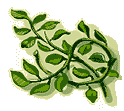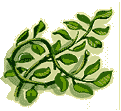![]()
February 2006
February weather conditions – The coldest part of the calendar year is normally over with, as we move into February. However, frost can still be expected, even well into March. Phoenix receives 80% of the possible sunshine in February over a 30 year average compared to 78% in January & 83% in March. The sunlight intensity level really begins to rise in March, compared to February, so enjoy the weather conditions while you can. On February 1, our sunrise is 7:24AM and sunset is 5:59PM, and on February 29th, the sunrise occurs at 6:58AM and sets at 6:25PM. The frost free period for most of the Salt River Valley runs from about mid-March to about mid-November. In the spring, frost has occurred as late as the end of March or even into early April. In the Avondale and Tolleson areas, (west end of the Valley), it is colder than in most other areas of the Salt River Valley. The Sun Lakes area can also be quite cool.
Citrus Leaf Drop – Leaf drop which started last November in preparation for the new vegetative growth forth coming will now begin to increase even more. This is normal. The leaves can be left in your citrus well as an organic mulch if you desire. Plants under stress can drop more foliage faster than those plants in a more favorable environment.
Suggested watering schedule – Citrus foliage will curl, cup inward, and droop when your plant becomes too dry. However, more citrus suffer from those who water them too often. With established citrus ( those planted at least 4 years ago), give the plant a good watering (soaking) under the entire spread of the plant. Water placement is more important at the outer half of the plant rather than at the trunk. Then try to go as long as possible before watering again. When citrus are grown in a good deep medium textured soil, use the following guideline for watering your citrus. If necessary, fine tune to schedule to best suit your soil condition. (This information does not apply to a drip irrigation system).
Citrus marmalade – The sour orange, also known as the ornamental orange, used as a landscape plant here in the Salt River Valley, makes an excellent sweet marmalade. Late December through early March is the period of peak ripeness.
Citrus Growing Location – Citrus trees are not tolerant of high levels of soluble salts in water or soil. Because citrus is salt sensitive, occasional deep penetration of water for leaching purposes is important. Establishing adequate sub soil drainage at planting time is probably the single most important step for future success of citrus plantings. Bermuda grass is very competitive around young citrus, so efforts should be made to keep the root area Bermuda free. Also, do not try to grow any other plant material in the citrus water basin area.
Navel oranges – In general, the navel orange does not like the excessive heat we have in the low desert. Therefore the amount of fruit we can harvest can be quite small compared to other orange varieties grown here. In a yard situation, navels will grow best if planted in a location where they can receive shade by the mid afternoon. Some examples include the eastside of the house, southeast corner of the house, west side of the house that receives shade from a two story building just adjacent to your property, or even on the east side of some taller vegetation. However, planting near a large pine tree or desert trees would not be recommended.
Texas Star Ruby Grapefruit – This variety of grapefruit is not well adapted to the Salt River Valley. The foliage on this particular grapefruit often turns a mustard yellow color during our long, hot summer. This symptom is already clearly visible by early July. Therefore, this grapefruit is a poor choice for the Salt River Valley. A good substitute is the Rio Red Grapefruit for color. Happy Peeling!
Also, we want to extend our thanks to all of you who participated in the East Valley Citrus Clinic. The event was a huge success again, thanks to everyone's hard work. The attendance was just under 200 people. We always enjoy hosting the clinic, and we're still promoting the event for next year.
This citrus information was written by Allen Boettcher, retired horticulture agent, at the Maricopa County Cooperative Extension, and our valuable employee here at Greenfield Citrus Nursery.
Thanks, Allen!
 |
Frequently Asked Questions |
 |
![]() Why is my citrus blossoming early this year?
Why is my citrus blossoming early this year?
A: Even though we're not yet half way through February, spring seems to have come early to the valley this year! Unseasonably warm temperatures are causing your citrus to flower sooner than usual this season. Here at Greenfield our limes and lemons are already in full bloom.
![]() Is it okay to pick fruit while the blossoms are on the tree?
Is it okay to pick fruit while the blossoms are on the tree?
A: Don't worry; you can enjoy harvesting your fruit during the blossom time. However, if your citrus tree still has the majority of its season's fruit remaining at the blossom time, your fruit production the subsequent year could be considerably less.
Submit any questions you may have through Bee-mail for next month's What's New!